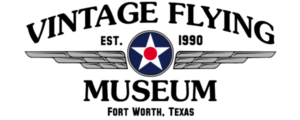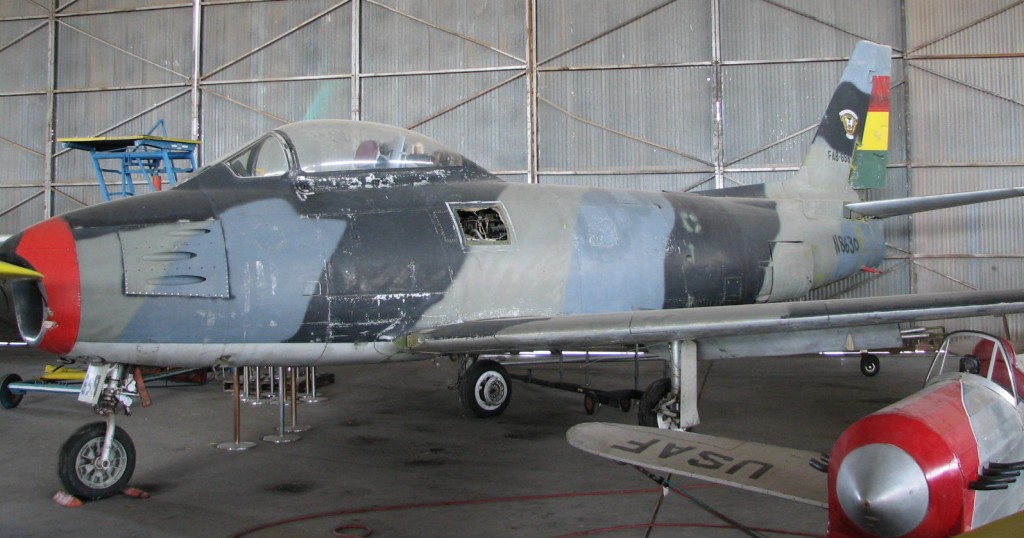The North American F-86 Sabre (sometimes called the Sabrejet) was a transonic jet fighter aircraft. Produced by North American Aviation, the Sabre is best known as America’s first swept wing fighter which could counter the similarly winged Soviet MiG-15 in high-speed dogfights over the skies of the Korean War. Considered one of the best and most important fighter aircraft in the Korean War, the F-86 accounted for a final ratio of 10-to-1. All 39 United Nations jet aces won their laurels in Sabres. Although it was developed in the late 1940s and was outdated by the end of the 1950s, the Sabre proved versatile and adaptable, and continued as a front-line fighter in numerous air forces until the last active operational examples were retired by the Bolivian Air Force in 1994.
After the Korean War ended, many Sabres entered service with dozens of foreign air arms, becoming the primary fighter equipment of many Allied nations. Its success led to an extended production run of more than 7,800 aircraft between 1949 and 1956, in the United States, Japan and Italy. Variants were built in Canada and Australia. It was by far the most-produced Western jet fighter, with total production of all variants at 9,860 units
Four models (F-86A, E, F and H) were day fighters or fighter bombers, while the F-86D, K and L versions were all-weather interceptors. Successive models of the daylight versions – all designed to destroy hostile aircraft in flight or on the ground — were equipped with more powerful engines and armament systems that ranged from bombs and rockets to machine guns and cannon. All are rated in the 650-mph class with a 600-mile combat radius and a service ceiling of over 45,000 feet.
The F-86E and subsequent models incorporated a unique control system, developed by North American, called the “all-flying tail.” Where the F-86A contained a booster control system that called for the pilot to do part of the work of controlling the aircraft, the newer system added full power-operated control for better maneuverability at high speeds. An “artificial feel” was built into the aircraft’s controls to give the pilot forces on the stick that were still conventional, but light enough for superior combat control.
General characteristics
- Crew: 1
- Length: 37 ft 1 in (11. 4 m)
- Wingspan: 37 ft (11.3 m)
- Height: 14 ft 1 in (4.5 m)
- Empty weight: 11,125 lb (5,046 kg)
- Max Take Off Weight: 18,152 lb (8,234 kg)
- Powerplant:
- 1 ea. General Electric J47-GE-27 turbojet
- Thrust: 5,910 lbf (26.3 kN)
Performance
- Maximum speed: 687 mph (1,106 km/h) at sea level
- Range: 1,525 mi (2,454 km)
- Service ceiling: 49,600 ft at combat weight
Armament
- Guns: 6 x 0.50 in (12.7mm) M2 Browning machine guns
- Rockets: variety of rocket launchers; e.g: 2 Matra rocket pods with 18 SNEB 68 mm rockets per pod
- External Stores: 5,300 lb (2,400 kg) of payload on four external hardpoints
- Bombs: A wide variety of bombs could be carried
- Max standard loadout being 2 1,000 lb bombs plus two drop tanks,
- Napalm canisters
- Tactical nuclear weapon
F-86F-30-NA S/N 53-4689 The Vintage Flying Museum’s F-86F was built by North American Aviation’s factory in Inglewood, California and delivered to the USAF on April 22nd 1953.
- April 1953: To 21st Fighter-Bomber Wing (Tactical Air Command), George AFB, CA (deployment to Eielson AFB, AK)
- March 1954: To 401st Fighter-Bomber Group (TAC), Alexandria AFB, LA
- December 1954: To 322nd Fighter-Day Wing (TAC), Foster AFB, TX
- July 1955: To Sacramento Air Materiel Area, McClellan AFB, CA
- October 1955: Dropped from inventory by transfer to Mutual Defense Assistance Plan (Venezuela)
- October 1955 to 1971: To Fuerza Aerea Venezolana (Venezuelan Air Force)
- June 1974 to 1994: To Brigada Aerea 21, Grupo Aereo de Caza 32 at Santa Cruz Bolivian Air Force
- 1994 to Present: Vintage Flying Museum

